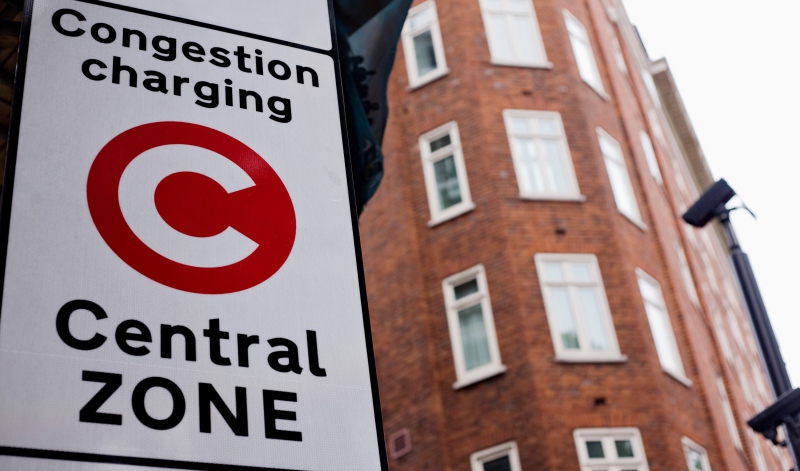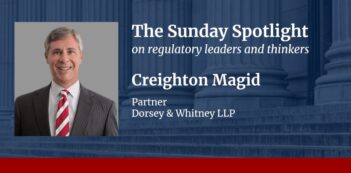
Scholar argues that legal barriers should not prevent cities from using congestion pricing to curb traffic.
When state and local governments began issuing their first round of coronavirus stay-at-home orders in the spring of 2020, something unforeseen happened: Traffic disappeared in nearly every major city in the United States.
Although the phenomenon was short-lived, the sharp decrease in traffic congestion offered a glimpse of a world free from excess pollution, causing some observers to wonder whether such a world would be possible even after the pandemic has ended and lockdowns are a distant memory.
Some economists argue that congestion pricing—a system that charges drivers for the right to drive in designated areas of a city—could alleviate traffic congestion. But in a recent article, legal scholar Amy Turner explains that, although congestion pricing has been effective in many cities such as London and Singapore, significant legal barriers impede its implementation in the United States.
Turner, a senior fellow at Columbia University’s Sabin Center for Climate Change Law, argues that a labyrinthine set of constitutional, federal, state, and privacy laws stand in the way of congestion pricing. Still, Turner urges cities to navigate through this legal framework to craft targeted congestion pricing regulations to reduce traffic on their roads and lower carbon emissions.
Perhaps the most widely known form of congestion pricing is “cordon pricing,” which charges drivers a fixed toll upon entering a defined geographic area. Cordon pricing became the subject of contentious debate in 2019 after New York State authorized New York City to begin collecting tolls from all vehicles driving into Manhattan’s central business district.
Despite the outsized attention that cordon pricing has received in the last year, Turner clarifies that it represents only one of multiple forms that congestion pricing can take. Other forms include variably priced lanes such as express or high occupancy lanes, tolls that charge drivers for every mile traveled within a designated cordoned area, and vehicle class pricing, which charges for entire categories of vehicles such as taxis or ridesharing fleets.
Turner cautions that each of these forms of congestion pricing presents its own set of legal challenges and that cities should be aware of the complex mix of constitutional, federal, state, and privacy laws that may apply.
At the federal level, congestion pricing can implicate multiple constitutional concerns. Most directly, the Commerce Clause of the U.S. Constitution delegates the regulation of interstate commerce exclusively to the federal government, and courts have interpreted that provision as placing a prohibition on states and local governments from interfering with that authority, a doctrine known as the “dormant Commerce Clause.”
To avoid violating this doctrine, Turner recommends that local governments take care to craft regulations that would not have—or appear to have—an obvious impact on interstate commerce. Although some courts have held that basic tolls and dynamic road prices do not violate the dormant Commerce Clause, most courts have yet to determine whether more specific programs such as those targeting commercial trucking companies or broad congestion tolls comply with the doctrine.
In addition to constitutional concerns, because federal laws take precedence over state and local regulations with which they conflict—a legal doctrine known as preemption—congestion pricing regulations risk being preempted by three main federal statutes: the Clean Air Act, the Energy Policy and Conservation Act, and the Federal Aviation Administration Authorization Act.
Each of these statutes provides that states and localities may not enact regulations that interfere with the federal government’s exclusive domain over motor vehicle emissions, fuel economy standards, and the logistics and trucking industry.
Although these laws can substantially constrain the authority of state and local governments to enact congestion pricing regulations, Turner explains that the U.S. Federal Highway Administration offers supportive pilot programs that enable state and local actors to implement congestion pricing strategies. Miami, San Diego, and suburban Virginia are but a few of the localities that have partnered with the agency to enact congestion pricing in accordance with federal law.
Congestion pricing could also run afoul of privacy laws. Turner explains that even the least intrusive method of data collection—license plate cameras—can raise individual privacy issues, as courts wrestle with the question of whether a person’s license plate number constitutes protectible personal information.
When governments charge drivers on the basis of how many miles they travel within a cordoned area, some jurisdictions have attempted to use GPS surveillance to track individual vehicles as they travel in real time. Turner suggests that governments that require that degree of granularity should delegate their data collection to private companies, which can encrypt the mileage and payment data to protect individual privacy.
Even as Turner acknowledges that the multiple layers of the U.S. legal system seem to present obstacles to congestion pricing, she concludes that state and local authorities still retain a significant degree of autonomy to control urban congestion. With careful drafting and a willingness to cooperate with federal and state entities, cities will be able to use congestion pricing as an effective policy instrument to clear their roads as well as their air, Turner argues.



